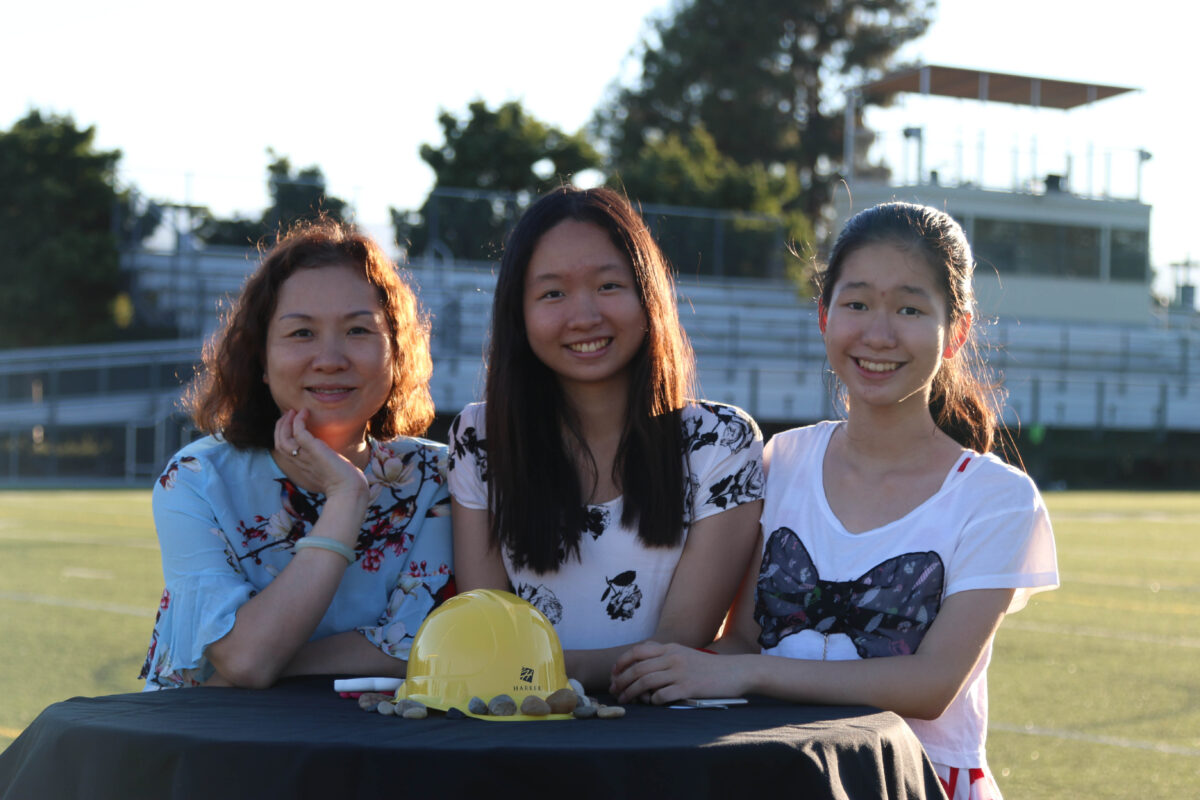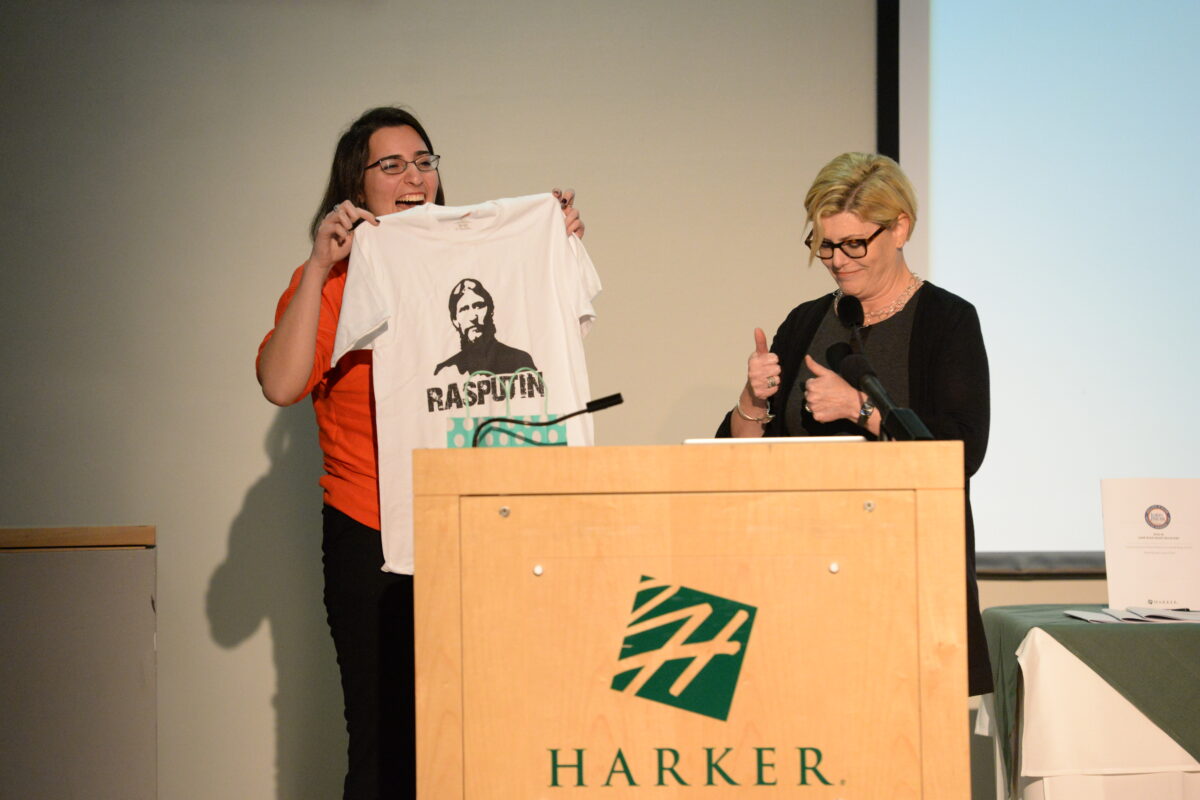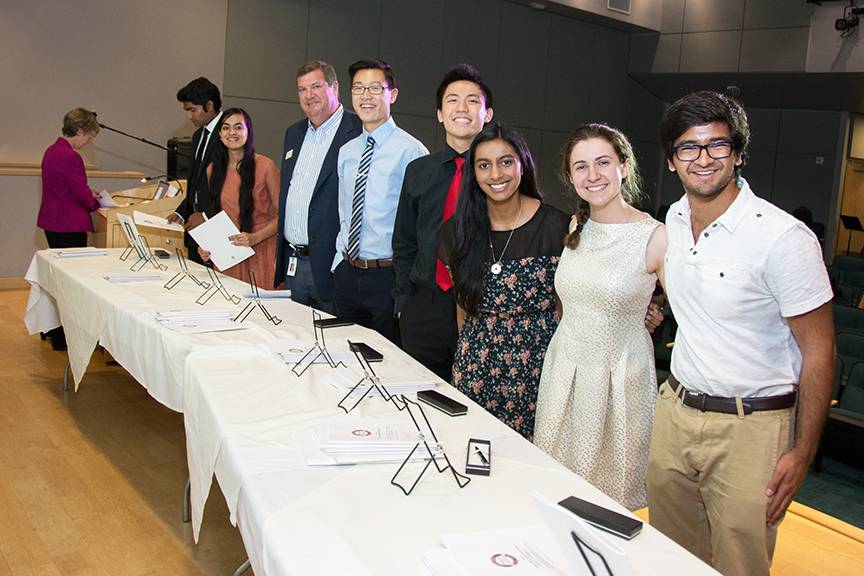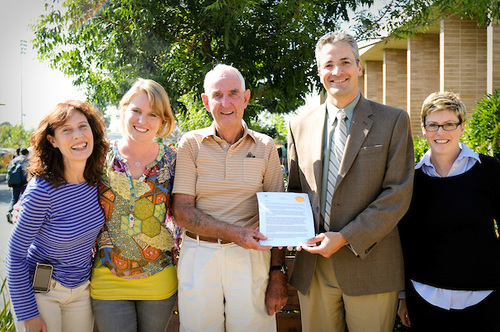The Rothschild Performing Arts Center, due to open in February 2018, is designed to present a wide variety of wonderful shows to a comfortable audience, and there are a thousand elements, literally behind the scenes, that will enhance that experience.
Harker Giving
Donors Get Look at Construction Site During Ice Cream Socials
Lower and middle school families that donated to the latest phase of our capital campaign gathered for two ice cream socials on the upper…
Near and Mitra Scholars Present Unique Research and are Recognized at Reception
On April 25, the 2016 John Near and Mitra Family scholars were honored at a special reception in the Nichols Hall auditorium. Established in…
Groundbreaking for Athletics and Performing Arts Complex on Track for Spring 2016
By Jacqueline De Guzman This article originally appeared in the fall 2015 Harker Quarterly. Last spring, a new two-building design for the athletic and performing…
Endowment Recipients Continue to Present Outstanding Research
Each year a set of seniors receives funds to research and write papers on topics of choice and this year’s array of papers continues…
Fun, Family, Community & Landmark Announcement
This article originally appeared in the winter 2014 Harker Quarterly. On Oct. 12, the Harker community united at the middle school campus for the Harker…
Rothschilds, Trustees and Fellows Make Special Accommodation and Extend Challenge
This article was originally published in the winter 2014 Harker Quarterly. A special accommodation has been made by the Rothschilds, trustees and fellows. This accommodation…
Harker Community Meets Rothschild Challenge!
This article was originally published in the winter 2014 Harker Quarterly. In keeping with Harker’s culture and tradition of philanthropy, more than 1,000 families rallied…
Jim Near, Endowment Founder, Father of Beloved Teacher and ’06 Alumna
We are saddened to announce that James “Jim” Near, father of longtime history teacher John Near, passed away Oct. 12 in Maui, Hawaii. He…
Community Rises to the Challenge, Raises Funds for Events Center Matching Gift
It was with tremendous gratitude that Chris Nikoloff, head of school, announced on Oct. 13 the exciting news that the Harker community contributed just…






